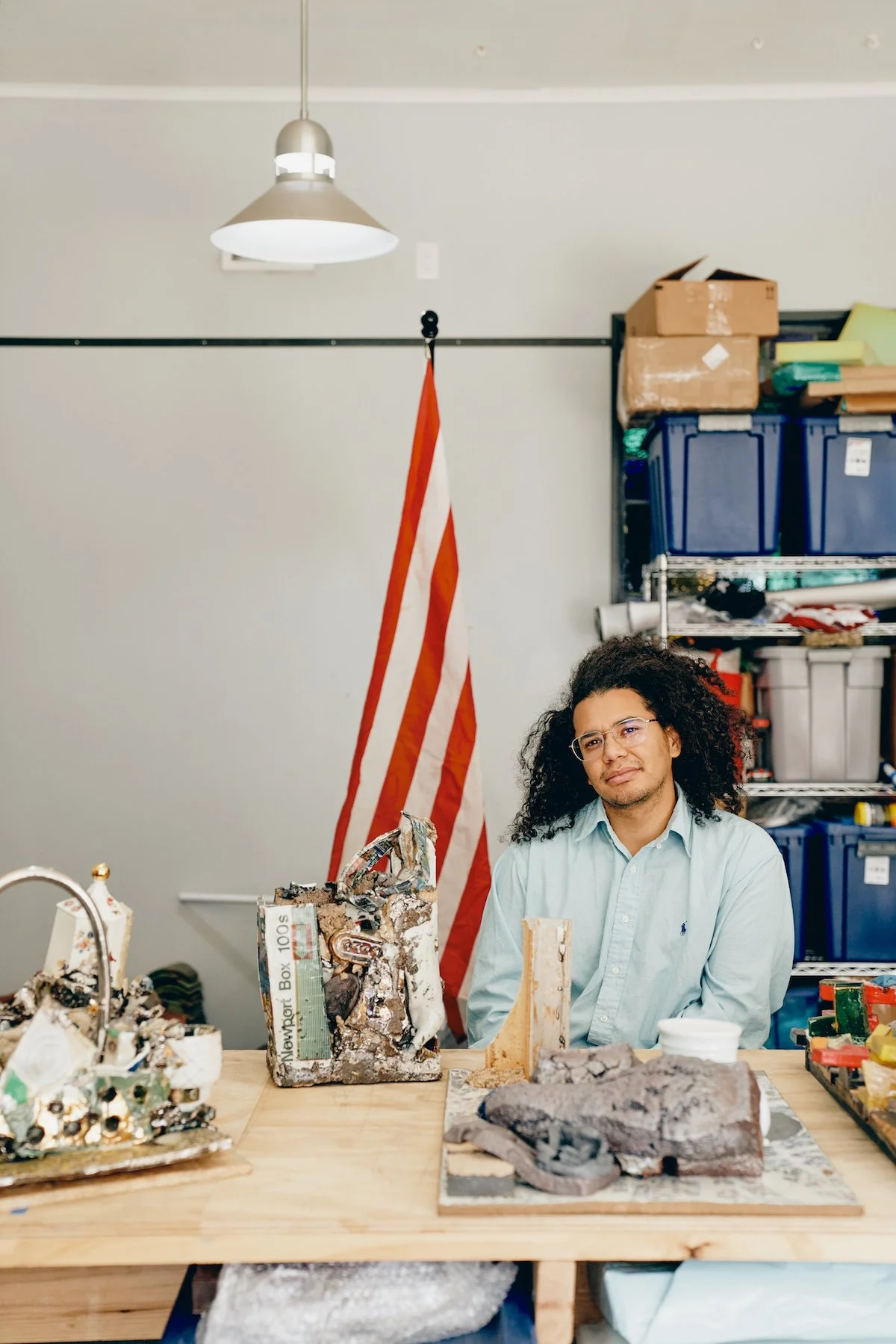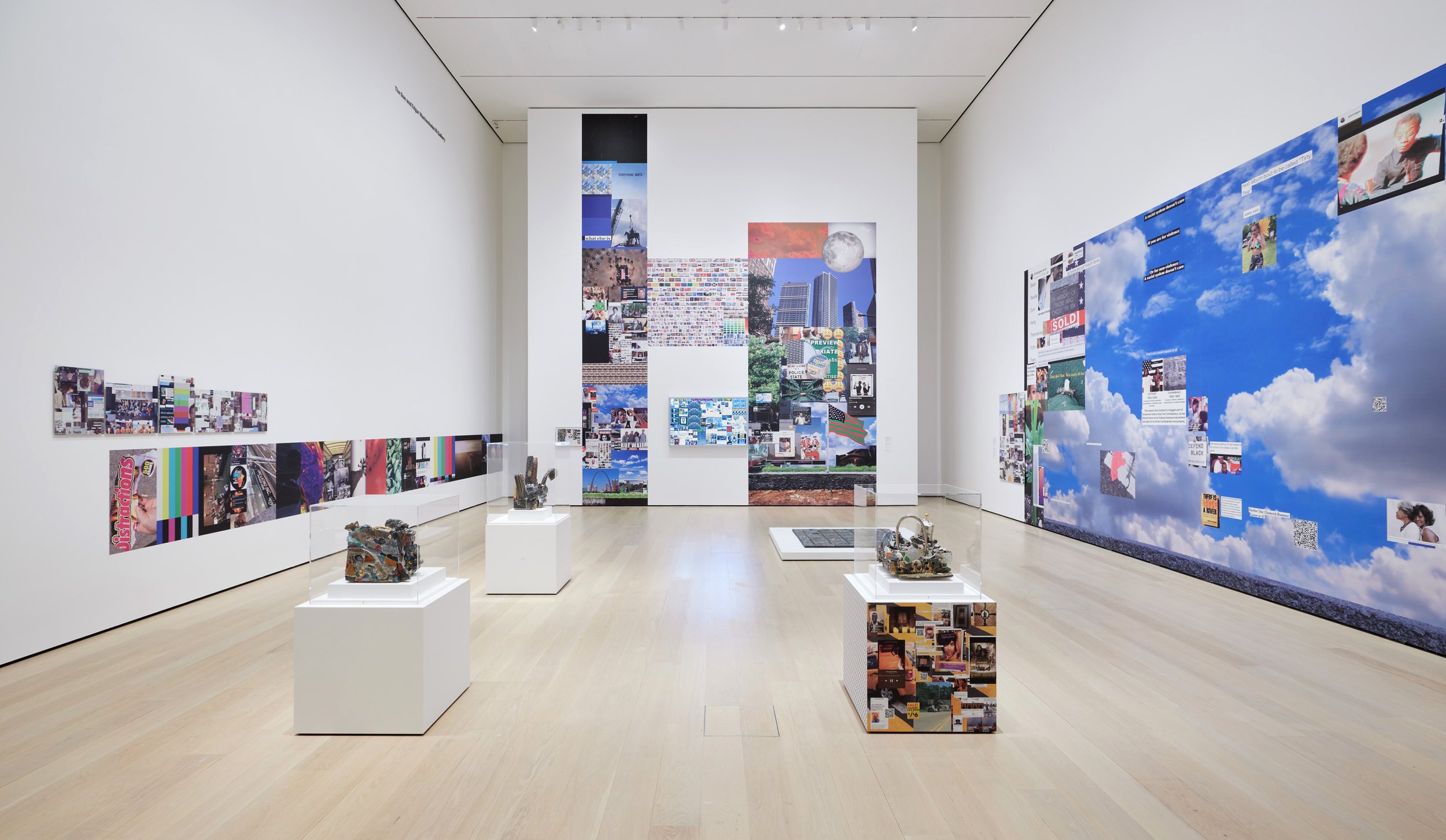A Resplendent Conversation with Kahlil Robert Irving
Portrait of Kahlil Robert Irving. Courtesy the artist. Photo: Attilio D’Agostino
Kahlil Robert Irving is an American artist born in San Diego, California, currently living and working in the USA. His artwork has been exhibited both nationally and internationally in both group exhibits and solo exhibits in various art spaces, including galleries and museums. Khalil was awarded the Alice C. Cole Fellow at Wellesley College and was selected to be The Robert Chapman Turner Teaching Fellow. He was an Artist in Residence at Art Omi in 2018, awarded the Louis Comfort Tiffany Foundation Biennial Award in 2019, and the Joan Mitchell Foundation Grant in 2020. Most recently, Khalil has been Assistant Professor of Visual Art Maryland Institute College of Art.
Irving’s work is in the collections of the Ken Ferguson Teaching Collection at the Kansas City Art Institute, Kansas City, Missouri; J.P Morgan Chase Art Collection, New York, New York; the Nerman Museum of Contemporary Art, Overland Park, Kansas; the Carnegie Museum of Art, Pittsburgh, Pennsylvania; the RISD Museum, Providence, Rhode Island; the Riga Porcelain Museum, Latvia; the Foundation for Contemporary Ceramic Art, Kecskemet, Hungary; and the Whitney Museum of American Art, New York. I enjoyed asking Kahlil about the most important lesson he learned from art school, the most impactful thing about art for him, and who some authors and musicians have influenced his artwork.
Kahlil has exhibits currently, upcoming, and recently at the CAC, MoMA, Carnegie Museum of Art, Carnegie Institute, High Museum of Art.
UZOMAH: What does taking risks in your art mean to you and why is it so important for artists to do?
KAHLIL: Taking risks is the space of being able to be present with the work and take on an experience that one may not normally take on or move into. Without regrets but space to try and see what would work. Risks are interesting spaces to be within. Within my practice, there is a lot of desire to make works that are inventive. That is a space that is quite exciting! I have started to realize the work does not have to change so quickly but a risk can be present in more ways than one. Currently, the risk is not to continue to change too quickly.
U: It is important to take risks to stay in touch with what is most important to oneself both in practice and personally?
K: What is at stake? I think about it often.
Courtesy of Artist
U: What is the greatest lesson you have learned from art school?
K: I learned so much from art school and I also grew up quite a bit. I did not realize that I had been protected growing up and when I arrived in Kansas City for college at the art institute I soon was exposed to so much. Between learning about what is art, how art can be influential on people’s experiences, and what art can be for someone.
I was not ready and fought the reality of the inevitable change which was distraught for a while but one of the most important lessons I learned is that throughout life there is still so much to learn from the experience. There are so many lessons to continue to learn through life. There are so many statements that were shared with me back then that I continue to hear and think about often. So many things have gone unheard but there are so many amazing things I am thinking about regularly.
One voice I hear often is telling me that the chance to build a drawing from a texture that relays content embedded within the work. It would be a great way to finish a drawing. One day I hope to get back to that drawing.
Courtesy of Artist
U: How has your style evolved from entering art school and since graduating from art school? What is the biggest shift you have noticed about your art?
K: Before going to art school, I did not have a style but was excited and interested in exploring. I went to graduate school after undergraduate school after getting weight-listed at UCLA and rejecting acceptance and a full scholarship at the School of the Art Institute of Chicago because I still had too much to learn. I think the series I started back in undergrad has so many layers to work through. There are so many ideas to get through. There is so much to work through.
What I have realized the biggest shifts have been learning what works and what does not. I am willing to revel in that space regularly.
Images: Installation views of "Projects: Kahlil Robert Irving". The Museum of Modern Art, December 18, 2021–May 1, 2022. Photo: David Almeida
Courtesy of Artist
U: Can you explain the creative process behind your latest exhibit presented at the Museum of Modern Art?
K: The exhibition Projects: Kahlil Robert Irving is an installation exhibiting works telling an experience ranging from the screen to the physical world. Some aspects are autobiographical, and others are a part of the greater experience of ours as a community in the USA broadly. I have included parts from my life in Saint Louis and New York City, where I used to have an apartment. There are works for the wall that use technology as the taking-off point relating to social media, photographs that I have taken, and the news. The sculptures in the midst of the space relate to historical decorative objects that tell a contemporary story but use dynamic processes to create them. Some sculptures were adjusted and had over ten layers on them.
Really the exhibition is about speed and reflection.
Even though this installation is not one work, I see the experience the viewer will have entering the space as an experiential work in itself. So, I hope that with the layers of content to view, many people have different entry points into the imagery and content.
I was invited to put together this project in the late spring of 2021, and I am glad that it was seamless to work with the teams across the Studio Museum in Harlem, the Museum of Modern Art, and The Kitchen.
For this installation, I worked with the exhibition design and curatorial teams to look through models and options I put together. Thinking through logistics, institutional parameters, and aesthetics, what one will see in NYC is from that 5 and 6 months of work and process. I really appreciate Angelique, Yelena, Mack, Sydney, Rachel, and Legacy for always being willing to get on calls and talk things through.
My inspiration comes from my life, what I see, and what I have been through. The Inspirations are conversations, books I have read, political structures I reflect on. All of this is a part of the creative process and what brought this installation together. Being able to remember every day, I have a choice and chance to do what I can to be a good person. Then I rely on my practice of being excited and inquisitive to hold me through. Poetic, physical, and theoretical materials excite me, and somehow there is a way to put them together lyrically, which become my installations. It changes daily. Lastly, I am inspired quite a bit by others and what people do. One example, the team that silk-screened my name on the wall to the museum was amazing, and I just wanted to share that little note. That even when meeting someone new can alter how you see something and can take you in a direction you were thinking of because you may be too close and you need that to support a new process or construct.
Courtesy of Artist
U: How has your work evolved since your first solo exhibit?
K: Well, there are several installations that could be considered my first solo exhibition. It is quite interesting, depending on what vantage point you may look at what I have done over the years. The most recent project that I consider my first was entitled “Streets:Chains: Cocktails” in New York City in 2017. From there to now, the work has gotten more intensely layered with colors and more precarious but present. I feel like I want to return to what I was going through in that installation. I have a bit more to work through in that group before I move on. I want to try to make more clay look like paper. I would like to get closer to something to look like real labels on a shape that is formed to look like a plastic bottle.
U: Who are some authors or musicians that influence your artwork and why?
K: The most influential author/s?
Zora Neale Hurston
Richard Pryor Dave Chapelle
The most influential musicians??
Andre Benjamin/ Outkast / Goodie Mob
Tracy Chapman
Biggie Smalls
The Whispers Erykah Badu
Stevie Wonder
Rick James Lil Kim
Life is the most influential part of my life and work. There are so many experiences to be had and they really influence what and how I see things. The above lists are not in any particular order!
Courtesy of Artist
U: How do you create a title for your exhibits that invites the potential audience to experience your theme expressed through your art?
K: I create titles referencing what I want the viewer to look for in the work. I make titles that mirror the lyrical structures within the work physically. Some are hard and rigid, and some of wispy and delicate details. I want to also imbed things into the viewer's experience that also may not be visible within the works. I start to talk to myself, and then when I know the titles are working, it all sounds like a song by then. I love making them in different colors and fonts.
When the work is exhibited, it does not always get accompanied with the work. So I hope the audience is able to see it all as a greater dialogue between so many parties.
U: When did you start making art?
K: I started making art when I was 21 studying abroad in Hungary. I had the chance to work at a small studio and when adjusting to making objects that communicated an interest in abstraction – I believed I made something that hit all the points. Up until then, I was a student… and then I became a student artist. Now I feel like I am still a student but of life making art.
All images are Installation views from "Projects: Kahlil Robert Irving". The Museum of Modern Art, December 18, 2021–May 1, 2022. Photo: David Almeida
For more information about Kahlil’s artwork and past and future exhibits please visit his site. You can also follow him on Instagram.





